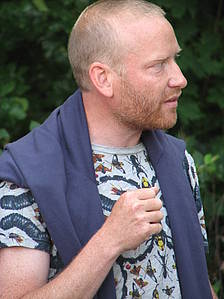Reflections on the First Symposium Organised by the GeoArchaeology Working Group
In this interview, archeologists Björn Nilsson, from the Department of Archaeology and Ancient History at Lund University, reflects on his working group’s first symposium and gives some advice to other working groups.
The symposium, which took place in January, focused on how X-rays, synchrotron light and neutron sources can be used in archaeology, geology and cultural heritage studies. Problem-solving was at the centre of the disussions, for example on how better methodological knowledge can generate new research fields and possibly solve traditional questions.
You have had your first major event. What are the take home reflections?
Honestly, I am quite surprised by the overall interest! We announced our event only some weeks after we have had our first internal working- group meeting, and yet we gathered a diverse group of 50 specialists. Not only geologist and archaeologists but also forensics, environmental researchers, architects, and many others. We are delighted.
Out of all the working groups, you are maybe the most interdisciplinary - how has it been to work together now you are finally a group?
It has been very pleasing, and rewarding: science is at its best when different people meet, discuss and set common goals.
What advice would you give to researchers thinking of starting or applying for working groups?
Just do it! Also, prepare to work for it.
What are the next steps for your group now?
We are planning two try-out sessions at the neutron reactor at FRMII, Munich and the sister synchrotron facility Elettra, Trieste. These labs have experience of both geological and cultural heritage samples. It will be a great learning opportunity. We are also planning the application for a LINXS Theme.
What are the main challenges/opportunities for your working group?
Transdisciplinarity means diversity. It might take some time to establish a common language. For many of my archaeological colleagues, the word "beamtime" sounds like something you do in Star Trek!
Any other reflections?
I think that it was a good idea to mix lectures, "1-slide-challenges" (participants got one minute/one slide to present a specific problem they would like to solve), and social activities. After that workshop discussions get more concrete.
The GeoArchaeology Working Group is part of the theme Imaging.

